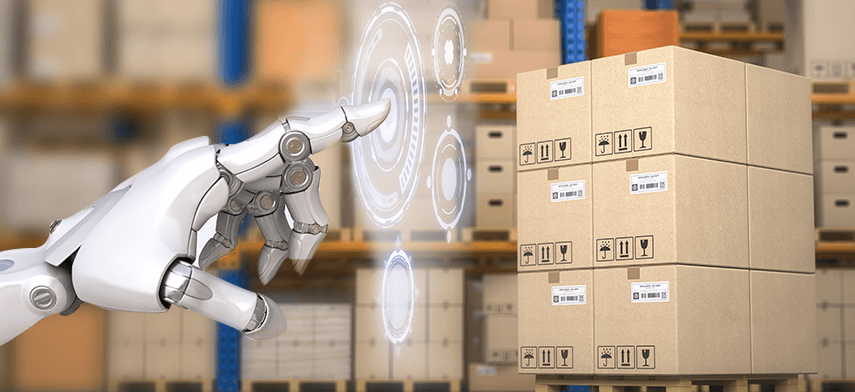The logistics and delivery industry is undergoing a major transformation, and artificial intelligence (AI) is at the forefront of this revolution. As customer expectations for faster, more efficient deliveries grow, companies are increasingly turning to AI to streamline operations, improve delivery accuracy, and enhance overall customer experiences. By 2025, AI will have a profound impact on everything from route optimization to predictive demand forecasting, automation in warehouses, and last-mile delivery innovations.
AI technologies have already begun reshaping the logistics landscape, helping businesses handle the increasing complexity of global supply chains. As these technologies evolve, AI will continue to redefine how businesses manage logistics, allowing for more dynamic and responsive operations. Let’s explore some of the key ways AI is optimizing logistics and delivery in 2025.
Route Optimization with AI
One of the most important ways AI is improving logistics is through AI-driven route optimization. In the past, logistics companies relied on static route planning based on general guidelines and pre-set schedules. However, AI has the power to analyze real-time traffic data, road conditions, weather patterns, and even customer preferences to suggest the most efficient routes for deliveries. This results in faster deliveries, reduced fuel consumption, and lower operational costs.
For instance, AI-powered systems can adjust delivery routes in real time by analyzing changing conditions such as road closures or high-traffic zones. This enables logistics companies to avoid delays, improving delivery speed and overall customer satisfaction. Additionally, AI’s ability to predict traffic patterns helps logistics providers optimize their fleets, reducing unnecessary trips and cutting down on emissions. AI in business operations also helps ensure that deliveries are made on time, improving customer loyalty and reducing the costs associated with late deliveries.
Predictive Analytics for Demand Forecasting
AI is also playing a critical role in demand forecasting within logistics. By utilizing predictive analytics, AI can analyze vast amounts of historical data and trends to predict future demand. This enables companies to adjust their inventory and delivery plans accordingly, ensuring that they meet customer needs while avoiding both stockouts and excess inventory.
For example, AI technologies tools can help predict seasonal demand spikes or increased sales during promotional events. Logistics companies can use these insights to optimize stock levels, adjust delivery schedules, and prepare for fluctuations in order volumes. This enhances the supply chain’s efficiency by allowing businesses to plan ahead rather than react to changes in demand, ultimately ensuring a smoother operation and faster deliveries.

Warehouse Automation
Warehouse operations are another area where AI is making a significant impact. With the help of AI-powered robots and automation systems, warehouses can operate more efficiently, reducing human error and speeding up order fulfillment. These systems can be used to automate tasks such as sorting, picking, and packing, all of which traditionally required manual labor.
As AI and automation continue to develop, robots are becoming increasingly capable of handling complex tasks within the warehouse. AI-driven systems can identify and retrieve products with greater accuracy, which minimizes inventory errors and enhances overall efficiency. With AI systems handling the repetitive tasks, warehouse employees can focus on more complex, high-value activities, allowing for a more optimized workflow.
Moreover, AI’s ability to predict inventory levels and automate reordering processes ensures that businesses can maintain adequate stock levels without overstocking or running out of products. Automated warehouses are capable of operating 24/7, which speeds up fulfillment times and reduces lead times for customer orders. AI in business operations also enhances inventory accuracy, helping businesses avoid stock discrepancies that could lead to costly mistakes.
Last-Mile Delivery Optimization
The “last mile” delivery process, which refers to the final leg of the journey from a distribution center to the customer’s doorstep, is often the most challenging and expensive part of logistics. AI is increasingly playing a central role in optimizing this step to reduce delivery times, cut costs, and improve the customer experience.
AI-powered systems can manage last-mile logistics by automating delivery schedules and routes, ensuring that deliveries are made efficiently and on time. By analyzing real-time data, AI systems can determine the best delivery window based on factors like traffic patterns, weather, and customer availability. These systems can even use autonomous vehicles and drones to complete deliveries faster and more cost-effectively, especially in urban areas where traditional delivery methods are less efficient.
Additionally, AI offers enhanced personalization options, allowing customers to select delivery windows that work best for them. Personalized delivery options are becoming a key selling point for e-commerce companies as customers demand more flexibility. AI can even send real-time updates on the status of deliveries, which not only improves transparency but also boosts customer satisfaction. By leveraging AI in the last mile, logistics companies can enhance the overall delivery experience while reducing operational expenses.
Enhanced Customer Service with AI
AI is also revolutionizing customer service within the logistics industry. With the growing complexity of customer demands, businesses need to respond faster and more efficiently. AI-powered chatbots and virtual assistants can handle a wide variety of customer inquiries, such as order tracking, delivery status updates, and post-delivery support.
These AI-driven tools are available 24/7 and can process requests at a fraction of the time it would take a human agent. By providing instant responses to frequently asked questions, AI helps businesses streamline their customer service operations. Additionally, AI chatbots are becoming increasingly sophisticated and can even handle more complex customer queries, offering solutions for common delivery problems and improving the overall customer experience.
AI systems can also learn from past customer interactions, allowing them to provide more personalized responses in the future. As AI technologies tools become smarter, businesses can expect to see a shift toward more proactive customer service, where potential issues are identified and resolved before they escalate. This level of service leads to greater customer loyalty and helps businesses maintain positive relationships with their clientele.
Sustainability and Environmental Benefits
With increasing pressure on businesses to reduce their environmental footprint, AI is playing an important role in making logistics more sustainable. AI-powered systems help reduce fuel consumption and carbon emissions by optimizing delivery routes, improving warehouse efficiency, and facilitating the use of electric vehicles (EVs).
For example, AI can recommend alternative routes that avoid high-traffic areas, reducing the need for additional fuel. As more logistics companies adopt EVs for deliveries, AI will play a key role in managing these fleets efficiently. By integrating AI with sustainable business practices, logistics companies can reduce emissions and contribute to a greener future.
Moreover, AI’s predictive capabilities help reduce waste by ensuring that inventory levels align with actual demand, reducing the need for overproduction and unnecessary shipments. This waste reduction is another way AI supports sustainability in logistics, helping businesses minimize their environmental impact while improving their bottom line.
Conclusion
As the logistics and delivery industries continue to evolve, AI is becoming an indispensable tool for optimizing every aspect of the supply chain. From route optimization and demand forecasting to warehouse automation and last-mile delivery innovations, AI is driving efficiency, reducing costs, and enhancing the customer experience. By 2025, AI will be fully integrated into the logistics ecosystem, helping businesses keep pace with growing consumer demands and increasing competition.
For businesses looking to stay ahead of the curve, investing in AI technologies tools and automation is crucial. The ability to leverage AI will be a key factor in delivering faster, more efficient services while keeping costs low and improving customer satisfaction. As AI continues to advance, companies that embrace its potential will be better positioned to succeed in the fast-paced logistics and delivery landscape.

